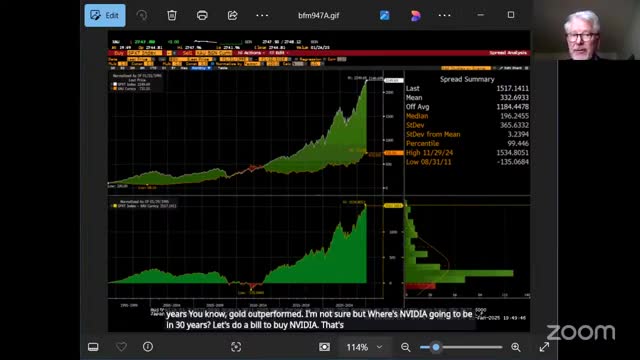Wyoming lawmakers debate gold investment strategy amid concerns over dollar stability
January 22, 2025 | Revenue Committee, Senate, Committees, Legislative, Wyoming
This article was created by AI summarizing key points discussed. AI makes mistakes, so for full details and context, please refer to the video of the full meeting. Please report any errors so we can fix them. Report an error »

In a recent meeting of the Wyoming Senate Revenue Committee on January 22, 2025, discussions centered around the potential investment in gold as a hedge against economic uncertainty. The committee examined the implications of the current strength of the U.S. dollar, despite ongoing concerns about national debt and fiscal policy.
One of the key points raised was the historical performance of gold as an investment. A committee member noted that gold does not yield dividends, which complicates its viability under the state’s spending policy of 5%. The discussion highlighted the logistical challenges of investing in physical gold, including storage costs and the complexities of trading futures. The committee explored various strategies for acquiring gold, including purchasing futures and taking delivery, but concluded that the costs associated with these methods could outweigh the benefits.
Senator Case expressed skepticism about the long-term value of gold, questioning its utility in a scenario where the economy collapses. He emphasized that in dire situations, tangible necessities like food would likely hold more value than gold. This sentiment was echoed by other members, who acknowledged the dollar's current strength and its status as the world's reserve currency, despite the nation's significant debt levels.
The committee also discussed the broader economic context, noting that while the U.S. is projected to reach a 200% debt-to-GDP ratio by 2050, historical trends suggest that such levels have not led to immediate economic collapse. The conversation included a recognition of the potential for rising interest rates to impact the dollar's strength and the overall market.
As the meeting concluded, the committee acknowledged the need for further analysis and discussion regarding gold investment. They plan to revisit the topic in an upcoming asset allocation meeting in April, where they will reassess the potential role of gold in the state’s investment strategy.
Overall, the discussions underscored the complexities of diversifying state investments and the ongoing debate about the best strategies to safeguard against economic volatility. The committee's deliberations reflect a cautious approach to gold investment, balancing historical performance with current economic realities.
One of the key points raised was the historical performance of gold as an investment. A committee member noted that gold does not yield dividends, which complicates its viability under the state’s spending policy of 5%. The discussion highlighted the logistical challenges of investing in physical gold, including storage costs and the complexities of trading futures. The committee explored various strategies for acquiring gold, including purchasing futures and taking delivery, but concluded that the costs associated with these methods could outweigh the benefits.
Senator Case expressed skepticism about the long-term value of gold, questioning its utility in a scenario where the economy collapses. He emphasized that in dire situations, tangible necessities like food would likely hold more value than gold. This sentiment was echoed by other members, who acknowledged the dollar's current strength and its status as the world's reserve currency, despite the nation's significant debt levels.
The committee also discussed the broader economic context, noting that while the U.S. is projected to reach a 200% debt-to-GDP ratio by 2050, historical trends suggest that such levels have not led to immediate economic collapse. The conversation included a recognition of the potential for rising interest rates to impact the dollar's strength and the overall market.
As the meeting concluded, the committee acknowledged the need for further analysis and discussion regarding gold investment. They plan to revisit the topic in an upcoming asset allocation meeting in April, where they will reassess the potential role of gold in the state’s investment strategy.
Overall, the discussions underscored the complexities of diversifying state investments and the ongoing debate about the best strategies to safeguard against economic volatility. The committee's deliberations reflect a cautious approach to gold investment, balancing historical performance with current economic realities.
View full meeting
This article is based on a recent meeting—watch the full video and explore the complete transcript for deeper insights into the discussion.
View full meeting